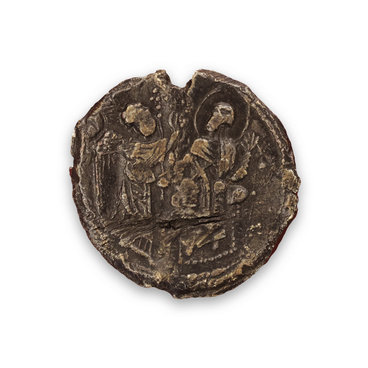In the period from 2012 to 2013, the Sambian Archaeological Expedition of the Institute of Archaeology of the Russian Academy of Sciences conducted excavations of a subsoil burial ground near the village of Logvino, Zelenogradsky District, Kaliningrad Region. In its central part, they found the remains of a destroyed burial complex, which was a burial with horses.
Several small bones of a horse skull were unearthed. Next to them were fragments of iron bridles, a small bronze buckle, a silver forehead pendant and three silver gilded rosettes. They were in a redeposited state, i.e. were displaced to the side as a result of geological processes.
The anthropomorphic forehead pendant from a horse headgear, weighing 14.3 grams, was cast. It consists of two parts: a subrectangular ferrule with a rivet to attach it to the skin and the pendant itself. The parts were fastened together by means of hinges and an iron rod.
The pendant was decorated in the Germanic animal style using gilding and niello techniques. This style was characterized by a combination of motifs of braided patterns and separate images of heads, paws, wings of fantastic creatures, beasts and birds. In fact, both geometric and figurative designs were used in a hybrid manner. This kind of jewelry is rare among archaeological finds.
The rosettes have a cross-shaped form and were used to connect the separating straps of horse headbands made in the era of the Great Migration of Peoples. The ferrules at the ends of the rosettes run crosswise from the central part. They were designed as animal masks consisting of the images of two bird heads separated by a strip of niello with faux granulation.
The noses of the masks
were pierced with holes for bronze rivets. The center of the intersection is a
pyramid with a truncated top occupied by a square insert with polished
almandine. Such finds have not been previously known in the Aesti settlement
area. This destroyed burial was most likely a part of a horsemen’s complex
damaged either by centuries-old plowing or during the construction of military
fortifications in this area in February— April 1945.


